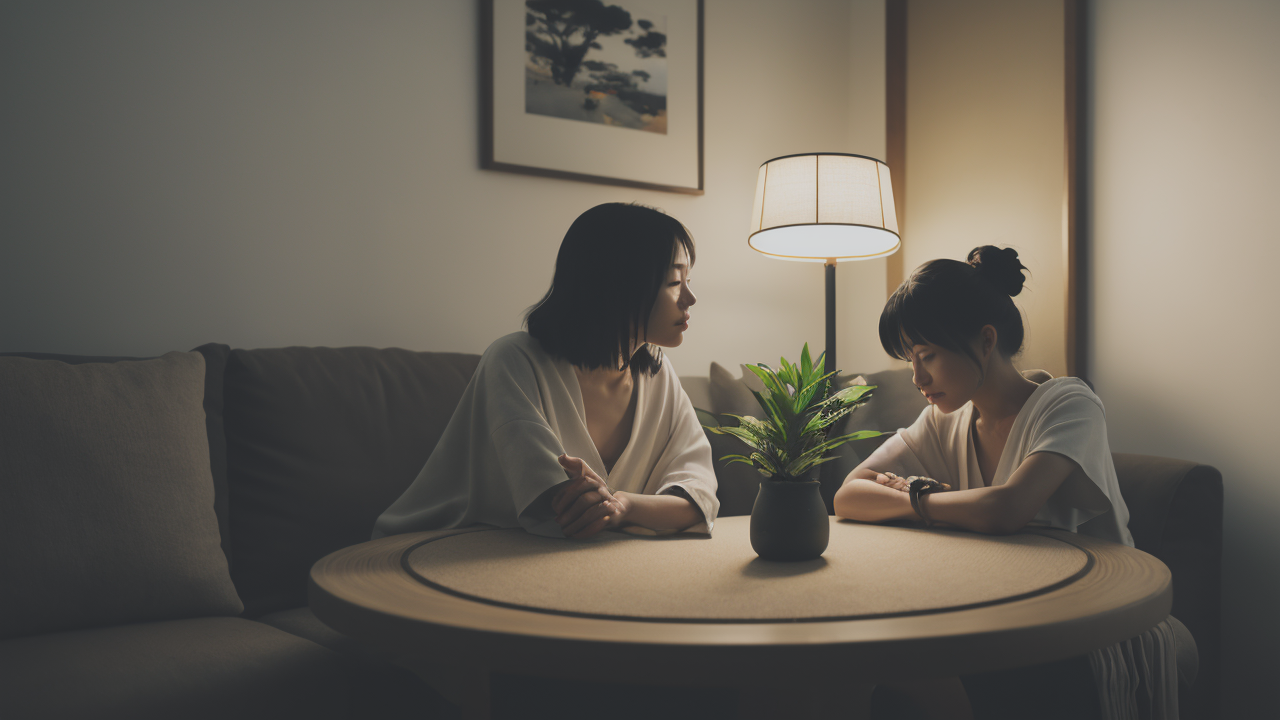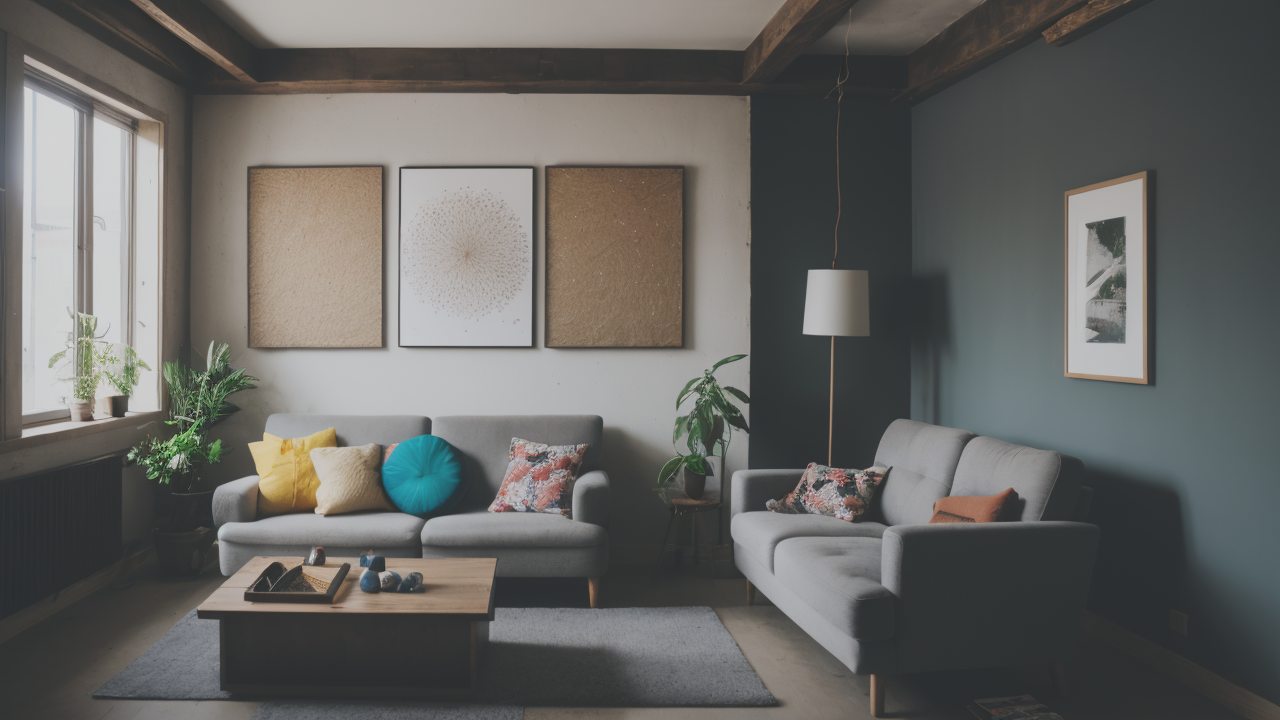
The Art of Dabi: Embracing Japanese Aesthetics in Wall Decor
The Philosophy of Wabi-Sabi: A Guide to Understanding Art and Life
What Is Wabi-Sabi?
Wabi-sabi is a Japanese concept that finds beauty in imperfection. It's an aesthetic that values:

- Simplicity
- Naturalness
- Acceptance of transience
In art and decor, wabi-sabi embraces:
- Asymmetry
- Roughness
- Minimalism
- Authenticity
Wabi-sabi art often features:
- Muted colors
- Natural materials
- Handmade items
- Objects with visible wear
This philosophy teaches us to appreciate the small things in life. It reminds us that beauty exists in unexpected places. Wabi-sabi encourages us to slow down and observe our surroundings.
It's about finding peace in the imperfect and incomplete. Wabi-sabi helps us accept the natural cycle of growth and decay. It's a way of seeing the world that can bring more contentment and less stress.
The Origins of Wabi-Sabi Aesthetics
Wabi-sabi has deep roots in Japanese culture and Zen Buddhism. It emerged around the 15th century as a reaction to luxury and excess. The term combines two concepts:
- Wabi: originally meant loneliness, now implies rustic simplicity
- Sabi: originally meant withered, now refers to the beauty of age
The Japanese tea ceremony played a key role in developing wabi-sabi. Tea masters chose simple, imperfect bowls over ornate ones. They valued the character and history of each item.
Over time, wabi-sabi influenced many aspects of Japanese life. It shaped:
- Architecture
- Garden design
- Poetry
- Pottery
- Painting
Wabi-sabi teaches us to find beauty in the natural cycle of life. It's about accepting change and impermanence. This philosophy spread beyond art to become a way of life in Japan.
Wabi-Sabi in Modern-Day Culture
Today, wabi-sabi influences many aspects of modern culture. Its appeal has spread far beyond Japan. We can see its impact in:
- Minimalist design
- Slow living movement
- Sustainable fashion
- Artisanal crafts
In home decor, wabi-sabi encourages:
- Use of natural materials
- Appreciation of handmade items
- Displays of weathered or aged objects
- Embrace of imperfections in furniture and decor
Wabi-sabi also affects our lifestyle choices. It promotes:
- Mindfulness
- Living in the present
- Accepting impermanence
- Finding beauty in everyday objects
Many people find wabi-sabi comforting in our fast-paced, digital world. It reminds us to slow down and appreciate simple things. Wabi-sabi offers an alternative to the pursuit of perfection.
It teaches us that flaws can be beautiful. This idea is refreshing in a world that often values flawlessness.
How to Incorporate Wabi-Sabi Art into Your Home Decor
Selecting the Perfect Wabi-Sabi Piece for Your Space
Choosing wabi-sabi art for your home is about more than just aesthetics. It's about finding pieces that resonate with you. Look for art that:

- Shows signs of age or wear
- Uses natural materials
- Has a handmade quality
- Features muted or earthy colors
Consider these types of wabi-sabi wall art:
- Textured abstract paintings
- Weathered wooden sculptures
- Ceramic wall hangings with deliberate cracks
- Framed pressed leaves or flowers
- Handwoven tapestries with subtle imperfections
When selecting, ask yourself:
- Does this piece make me feel calm?
- Does it tell a story through its imperfections?
- Will it age beautifully over time?
Remember, wabi-sabi art doesn't have to be expensive. You can find beautiful pieces in thrift stores or flea markets. Sometimes, the most meaningful items are those with a history.
Trust your instincts when choosing wabi-sabi art. If a piece speaks to you, it's likely a good fit for your space.
Combining Wabi-Sabi with Other Decorative Elements
Wabi-sabi art can blend well with many decor styles. The key is to create balance and harmony. Here are some tips:
- Mix textures:
- Pair rough wabi-sabi pieces with smooth surfaces
- Combine natural fabrics with more polished elements
- Use neutral colors:
- Choose a muted color palette for your space
- Let the wabi-sabi art stand out against simple backgrounds
- Incorporate natural elements:
- Add plants to complement wabi-sabi art
- Use natural materials like wood, stone, or clay in your decor
- Create negative space:
- Allow room for your wabi-sabi art to breathe
- Avoid cluttering the space around it
- Balance old and new:
- Mix wabi-sabi pieces with modern furniture
- Use contemporary frames for traditional wabi-sabi art
Remember, the goal is to create a space that feels lived-in and authentic. It's not about perfection. Let your wabi-sabi art tell a story in your home.
Don't be afraid to experiment. Wabi-sabi is about embracing the unexpected. Your unique combinations can create a truly personal space.
Maintenance and Care for Your Wabi-Sabi Wall Art
Caring for wabi-sabi art is about preserving its essence while allowing natural aging. Here are some tips:
- Dusting:
- Use a soft, dry cloth or brush
- Avoid harsh chemicals that might damage natural materials
- Handling:
- Always use clean hands when touching the art
- Support fragile pieces from the bottom when moving
- Placement:
- Avoid direct sunlight to prevent fading
- Keep away from heat sources and humid areas
- Embracing change:
- Accept that your art may change over time
- View new marks or patina as part of the piece's story
- Repairs:
- If needed, use methods that align with wabi-sabi philosophy
- Consider kintsugi for ceramic pieces - repairing with gold to highlight cracks
Remember, wabi-sabi art is meant to age gracefully. Don't try to keep it in pristine condition. Instead, appreciate how it changes over time. This is part of its beauty and charm.
The goal is to care for your art while allowing it to evolve naturally. Each new mark adds to its history and value.
The Impact of Wabi-Sabi Art on the US Market
Trends in Wabi-Sabi Wall Art
Wabi-sabi art is gaining popularity in the US market. This trend reflects a broader shift towards mindful living. People are looking for ways to slow down and appreciate simple beauty. Key trends include:

- Natural materials:
- Increased demand for art made from wood, clay, and natural fibers
- Growing interest in pieces that showcase raw, unprocessed textures
- Handmade quality:
- Rising appreciation for artisanal and handcrafted wall art
- Preference for pieces with visible signs of the artist's hand
- Minimalist designs:
- Trend towards simple, uncluttered compositions
- Focus on single objects or sparse arrangements in wall art
- Earthy color palettes:
- Growing popularity of muted, natural tones
- Increased use of organic pigments and dyes in art creation
- Upcycled and repurposed materials:
- Rising interest in art made from reclaimed or recycled materials
- Appreciation for pieces that tell a story of transformation
These trends show a growing desire for authenticity in home decor. People want their spaces to feel calm and grounded.
The Value of Wabi-Sabi in Home Decor Investments
Investing in wabi-sabi wall art can be rewarding, both emotionally and financially. Here's why:
- Timeless appeal:
- Wabi-sabi art often transcends passing trends
- Its aesthetic can remain relevant for years, even decades
- Uniqueness:
- Each piece is often one-of-a-kind, increasing its value
- Handmade quality adds to the art's distinctiveness
- Versatility:
- Wabi-sabi art can complement various decor styles
- It can easily transition between different spaces in your home
- Emotional value:
- These pieces often carry stories and meanings
- They can become cherished family heirlooms over time
- Sustainability:
- Wabi-sabi art often aligns with eco-friendly values
- Investing in quality, long-lasting pieces reduces waste
When investing, consider the artist's reputation and the materials used. Look for pieces that have the potential to age beautifully. Remember, the value of wabi-sabi art isn't just monetary.
It's also about the joy and peace it brings to your space. Good wabi-sabi art can improve your quality of life.
The Future of Wabi-Sabi in Interior Design and Art Galleries
The future of wabi-sabi in US interior design and art galleries looks promising. Here are some predictions:
- Increased mainstream acceptance:
- More mainstream retailers incorporating wabi-sabi elements
- Growing presence in popular home decor magazines and shows
- Fusion with technology:
- Digital art incorporating wabi-sabi principles
- Virtual reality experiences of wabi-sabi spaces
- Emphasis on sustainability:
- More galleries focusing on eco-friendly wabi-sabi art
- Increased use of recycled and sustainable materials in creation
- Collaborations with contemporary artists:
- Traditional wabi-sabi techniques meeting modern art forms
- Cross-cultural interpretations of wabi-sabi aesthetics
- Educational initiatives:
- More workshops and classes on wabi-sabi philosophy and art
- Increased inclusion in art education curricula
As people seek balance in a fast-paced world, wabi-sabi's influence is likely to grow. Its focus on mindfulness and appreciation of imperfection resonates with many. Wabi-sabi offers a refreshing alternative to perfectionism and consumerism.
It's likely we'll see more wabi-sabi influences in public spaces too. This could bring a sense of calm to our busy lives.


